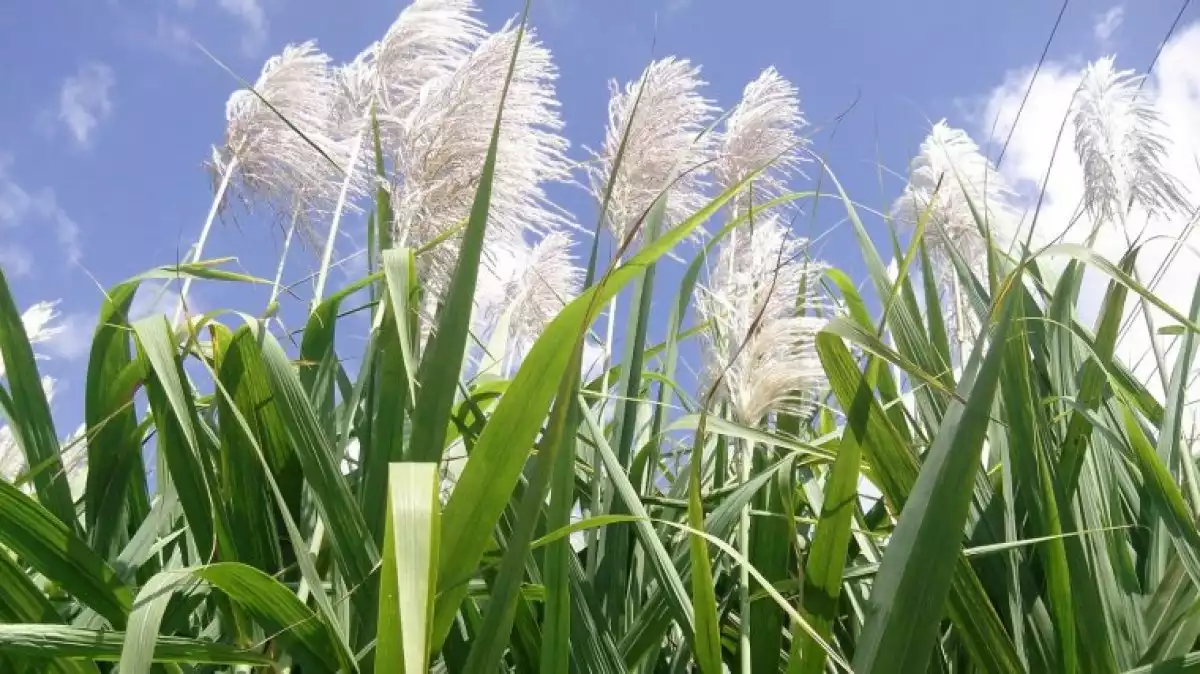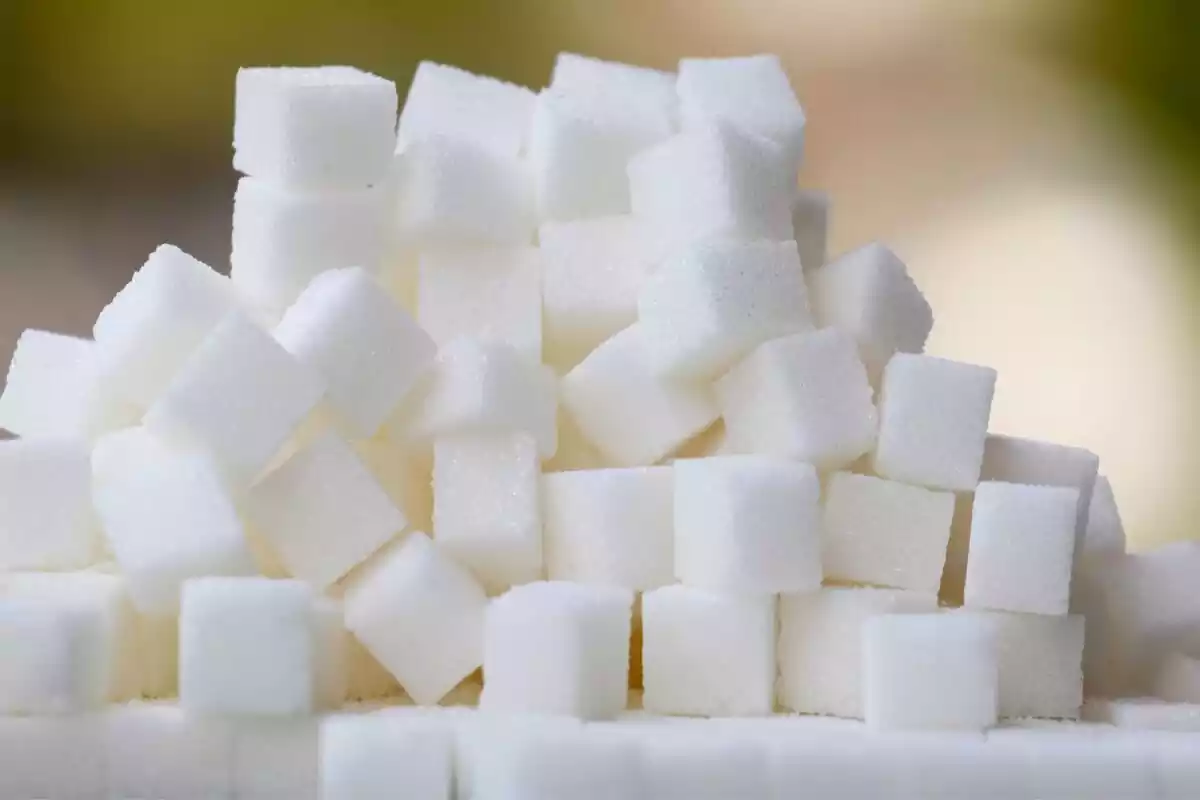Sugar is a chemical substance that is produced naturally and artificially, as the product of the union between glucose and fructose, which is very important to maintain the energy of our organism.
It is obtained mainly from sugar cane and can be produced in different ways: refined sugar, brown sugar, muscovado sugar, confectioners sugar, among others. In this article, we are going to explain the main characteristics of sugar as well as the different types and uses.
What is sugar?
Sugar is a sweet, colorless and soluble in water compound that is produced naturally in living organisms. Chemically speaking, the term "sugar" refers to the carbohydrates, whose general formula is Cn(H2O).
According to the variants of this formula, we can find different types of sugar. The most common is sucrose, an industrial sweetener commonly used in food and drinks. Its chemical formula is C1H22O11 and it is called "table sugar" or "common sugar".
Also in chemical terms, sucrose is a disaccharide, that is, a compound that contains a glucose and a fructose molecule. They are both a type of natural sugars that are found in fruit, vegetables, and honey.
They can also be produced artificially, so we can also find them in many other foods. They are both important sources of energy and the difference between one and other is its chemical structure.
So, when we eat, both glucose and fructose enter our body and they have different functions. Glucose is the one we find in higher amounts in our blood.
Although sucrose is found naturally in all plants, it is mainly obtained from sugar cane and beta vulgaris (known as beet).
Benefits and risks
Among other things, sugar is an important source of calories. As such, it helps our bodies maintain the energy levels necessary for our daily activities.
The problem is, as it does not contain vitamins and minerals, these calories can become easily "additional calories," that are the ones that we do not need. Especially if we have a sedentary lifestyle that does not allow us to eliminate the excess is sugar.
In general, additional calories become triglycerides and, if these are produced in excess, their accumulation in tissues and cells can harm our body.
In the same way, an excess of glucose in our blood can cause diseases such as diabetes. Likewise, very low glucose levels can have important consequences on our body.

Sugar cane
As mentioned previously, one of the main sources of sucrose production is sugar cane, which is a plant with a very long stem. It can measure up to 6 meters high and it has long pods on the sides.
It originally from New Guinea and South Asia. Over time, this plant was cultivated in Europe and centuries later it arrived in America. Today, the Latin American region is one of the world's leading sugar producers, probably because it is best cultivated in tropical areas.
Specifically, it is extracted from the stem of sugar cane. In this part of the plant, there is a thick liquid (juice) containing high concentrations of sucrose. Its quality depends to a great extent on the soil in which it is cultivated.
After a process of drying, washing, and crystallization, we obtain the white and sweet particles commonly known as "sugar" or "cane sugar." The place where all this happens is known as "sugar mill."
Also, the stem can be chewed as natural candy. On the other hand, the same extract is used to elaborate distillates such as rum.
Types of sugar and their uses
Nowadays, a lot of types of sugar are produced and distributed. Each of them varies depending on its process of production, as well as its composition, texture, flavor, and color.
According to their main characteristics, different types of sugar can be used to prepare or season different foods. In fact, they are not only used to sweeten food but also to decorate popular holidays, such as sugar skulls during the day of the dead in Mexico.
In the following lines we list the most important types:
1. White or refined sugar
It is a type that is highly refined and it is white. It is the most common type of sugar, it is processed industrially and its chemical composition is the sucrose. It is also called "table sugar" or "common sugar."
2. Muscovado sugar
Muscovado sugar is a type of cane sugar that is not refined. It can be a dark or a light color and its texture is sandy and wet. As it has a more concentrated flavor it is used in the elaboration of sweet and sour foods.

3. Whole brown sugar
There are whole varieties that are refined white sugar to which molasses is added. Whole brown sugar is the original raw material with which the rest of the sugar is made. In other words, it is a purer and therefore healthier form.
4. Confectioners' sugar
This type is also called icing or powdered sugar. It is more refined than white sugar. Its color is also whiter and it dissolves easier because the grains are finer. It is usually used, as its name says, for confectionery and cocktail production.
5. Pearl sugar
It has a rough and hard texture. The color is more opaque and the grains are larger. This type of sugar is also used for confectionery and bakery.
- This article about "Sugar" was originally published in Spanish in Viviendo La Salud
References
Foster, K. (2014). A complete visual guide to 11 different kinds of sugar. The Kitchn. Retrieved 28 November 2018.
Larrahondo, J. (1995) Calidad de la caña de azúcar. pp. 337-354. En Cenicaña. El cultivo de la caña en la zona azucarera de Colombia. Cenicaña: Cali.
Sigh, P. & Clarke, M. (2018). Sugar. Chemical Compound. Encyclopaedia Britannica. Retreieved 28 November 2018. Available on https://www.britannica.com/science/sugar-chemical-compound
